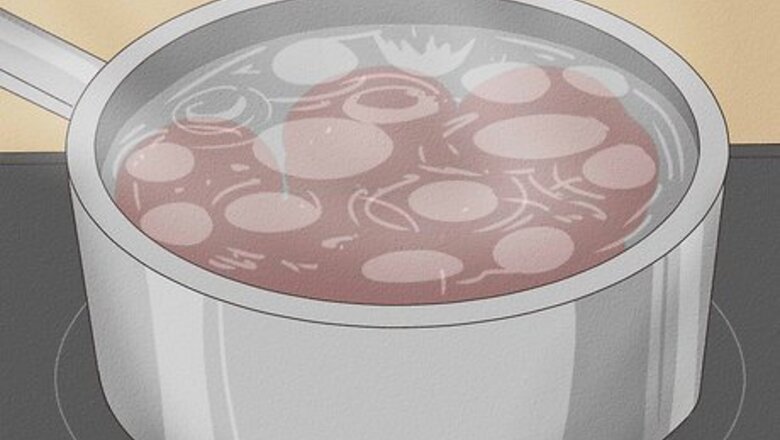
views
- Put your apples in boiling water for a few seconds to easily remove the wax.
- Soak apples in a mixture of water and vinegar or lemon juice to dissolve the wax and remove pesticides and bacteria.
- Scrape the skin or peel the apples to remove wax by hand.
- Avoid using soap, cleaners, or commercial fruit sprays to clean apples or other produce, as it could make you sick.
Dip apples in boiling water.
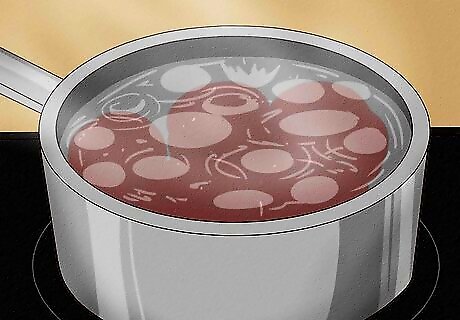
Hot water dissolves the wax quickly. Fill a large pot with water and set it on the stove. Turn the heat to high and let the water boil. Set the apples in the water for just a few seconds, turning them around with a slotted spoon to remove the wax on all sides. Carefully remove the apples and set them on a clean towel. A quick dunk in boiling water won't affect the texture of your apple, though it may dull the color just a tad. Rest assured that the apple will still taste delicious! If you’re making candy apples, dry them with paper towels and let them cool for about 30 minutes before you dip them in the caramel or candy coating.
Wash apples with vinegar.
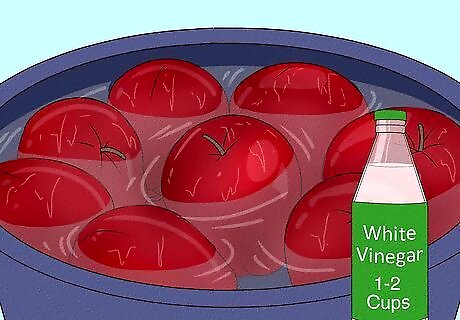
Vinegar removes wax as well as pesticides and bacteria. Fill your clean sink or a large bowl with cold water. Add 1–2 cups (240–470 mL) of plain white vinegar. Soak your apples in the mixture for 5-10 minutes. With clean hands, scrub the apples to help dissolve the wax on all sides. Then, rinse the apples thoroughly with clean water. As an alternative to plain white vinegar, use apple cider vinegar or lemon juice. A vinegar and water wash can remove 98% of bacteria on an apple.
Soak them in baking soda and water.
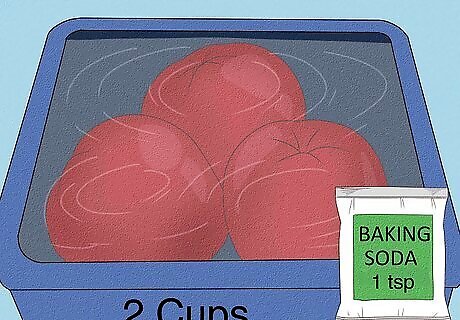
Baking soda’s abrasive powers get rid of waxy residue. Fill a bowl with 2 cups (470 mL) of water and 1 teaspoon (4 g) of baking soda. Mix the water up to dissolve the baking soda, then soak your apples in the solution for 15 minutes. Thoroughly rinse the apples with clean water and enjoy!
Rinse apples with salt water.
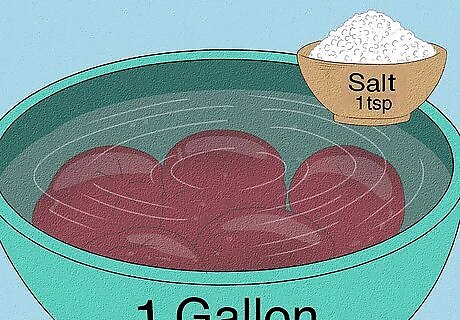
Salt helps break down wax better than plain water. Fill a large bowl with about 1 gallon (3.8 L) of water and add 1 teaspoon (6 grams) of salt. Mix the salt into the water, then add your apples. Swirl them around to ensure they get completely coated with the salt water solution. Then, just rinse them with clean water and dry them off.
Scrape off the wax.
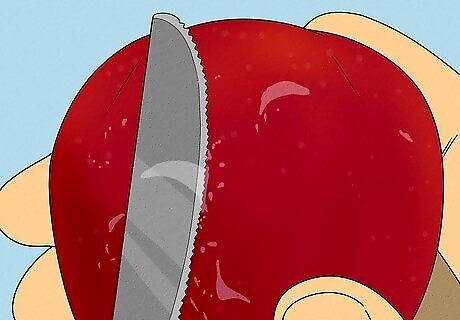
Remove the wax by hand. Carefully run a knife over the skin of the apple to scrape off the wax. Repeat the process around the entire apple. A butter knife would be a good choice here since you're just scraping the skin, not cutting into the apple.
Remove the peel.
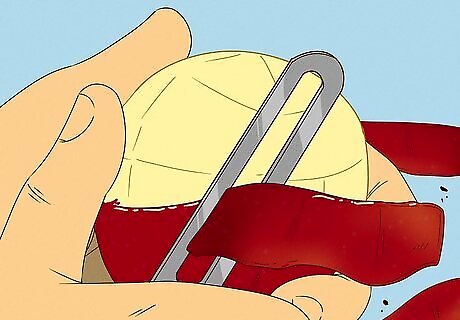
Peeling the apple will get rid of wax, bacteria, and pesticides on the skin. Just take a paring knife or vegetable peeler and carefully remove the skin from the apple. While you’ll miss out on some of the nutrients found in the skin, this is a sure-fire way to avoid ingesting any of the wax on an apple.
Avoid washing apples with soap or cleaning solutions.
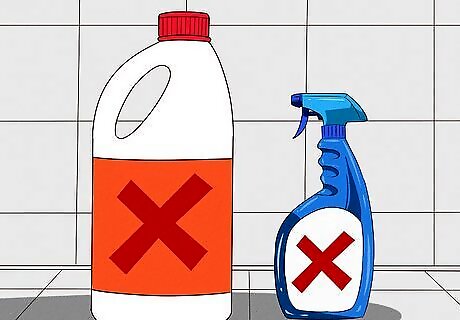
Soaps and cleaners contain chemicals that aren’t safe to eat. While it may seem like scrubbing apples with soap or detergent would make them the cleanest, it’s actually unnecessary and unsafe. The chemicals could soak into the apples and make you sick. Avoid using any cleaners or antiseptics, as well. Stick to one of the natural methods above, instead. The FDA recommends against using commercial produce washes, as their safety and effectiveness haven’t been tested.
















Comments
0 comment